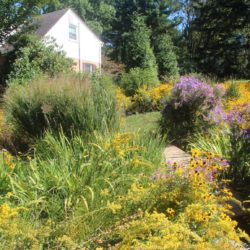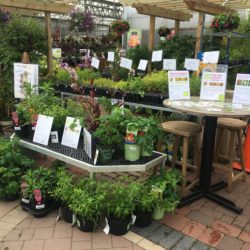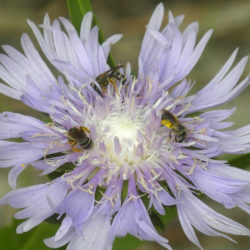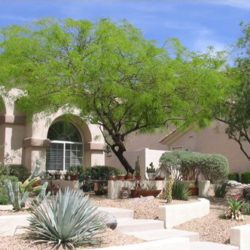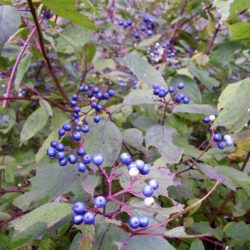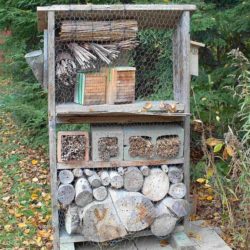As demand grows for plants that support pollinators and other wildlife, ELA reached out to a few experts to find out which species they recommend including in every landscape design.
Landscaping for Wildlife
Seeing and learning about wildlife is an enriching experience that anyone can enjoy. When landscapes provide food, shelter, water, and nesting areas for reproduction, a rich variety of life follows. The result is a healthier, more resilient ecosystem for all inhabitants.
Citizen Scientists Help Parse the Native/Nativar Debate
by Jessamine (Jessa) Finch
As pollinators lose ground, we’ve been urged to create more pollinator-friendly gardens, but are all pollinator gardens created equal? A team at the Chicago Botanic Garden has developed a project to evaluate native and nativar support of pollinators by gathering data on pollinator preferences across the country. You can become part of the research team.
Are Flowering Landscapes on Solar Farms Part of the Future of Pollinator Conservation?
As pollinator populations decline as a result of habitat, solar farms may be a part of a solution that is beneficial to both wildlife and humans. Trials of native plants in conditions mimicking those found under ground-mounted photovoltaic solar sites show positive results.
The Birds and the Trees: Managing the Urban Forest for Wildlife
by Dr. Susannah Lerman
Trees and shrubs provide ecosystem services and societal benefits in urban and suburban environments. They also provide vital habitat for birds, pollinators, and other wildlife. A new tool correlates habitat requirements for songbirds, evaluates the bird habitat potential at ecoregion scales, and can guide habitat improvement plans.
Wildflowers of Summer
by Carol Gracie Unlike spring, when most people are eager to get out in the woods to look for the first wildflowers of the year, summer tends to be a…
Eco-Answers from the Pros: Fall Food for Hummingbirds
Do you have suggestions for late-season blooming native plants in the Northeast for humming birds? The hummingbirds in my gardens have been very active on the early and mid-season monarda…
Superfoods in the Insect Garden
The best food plants for insects, with a focus on caterpillars and bees by Thomas Berger When choosing plants to support insects in our gardens, we want to make the…
The Pleasures of Butterfly Gardening
by Cathy Rooney For those of us who love to garden, whether for necessity, pleasure or both, an added dimension of the challenge and pleasure is to provide flowers that…
Landscaping with a Purpose – What’s Diversity Got To Do with It?
by Dr. Randi Eckel In the fragmented ecosystems where we live and work, the importance of diversity in our landscapes cannot be over emphasized. Diversity of native plants, insects, mammals,…
Managing Land for Pollinators and Conservation Biocontrol
by Emily May Conservation biological control is a science-based pest management strategy that seeks to integrate beneficial insects back into the landscape for natural pest control, ultimately reducing and in…
Protecting and Providing Nesting for Native Bees and Wasps
by Thomas Berger, text and photos Feeding the birds in winter has become a common practice so that we can support and enjoy them, and providing birds with nesting boxes…
For the Birds
by Karen Bussolini Bluebirds brighten any day, but their blast of blue and muted melodies especially lift my spirits in winter. On sunny mornings they’re like blue-clad clowns catching drops…

